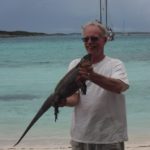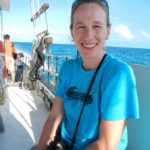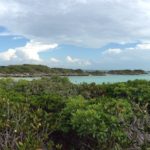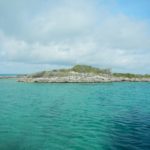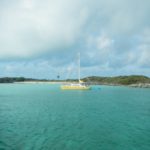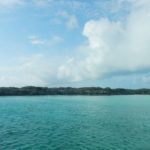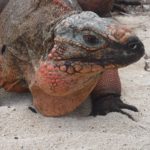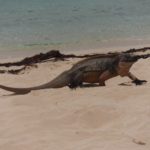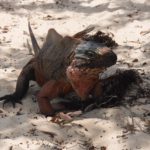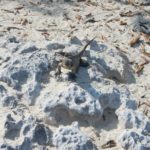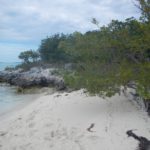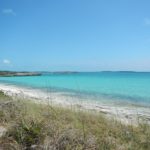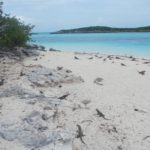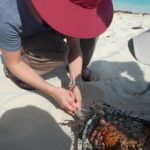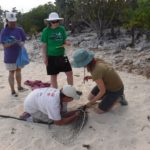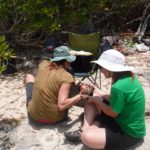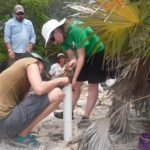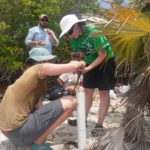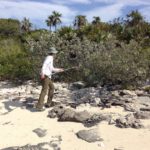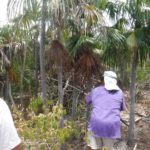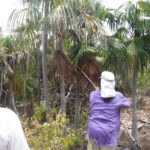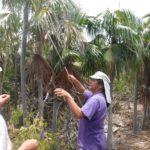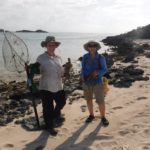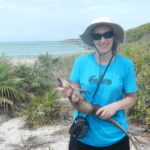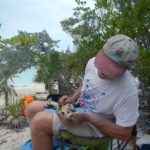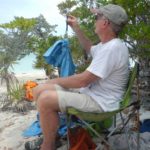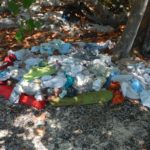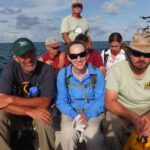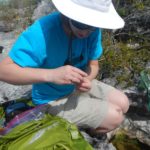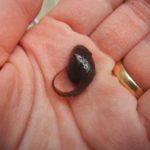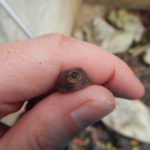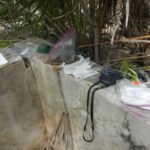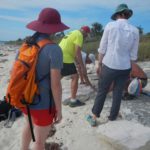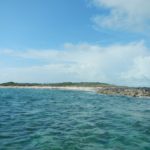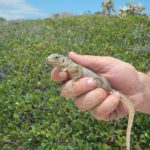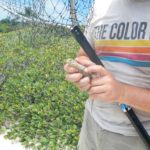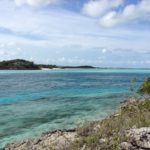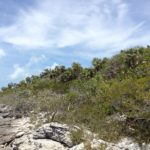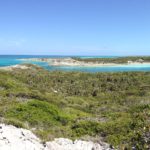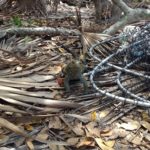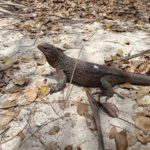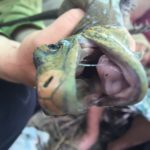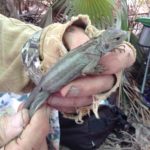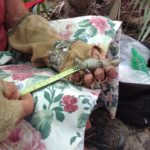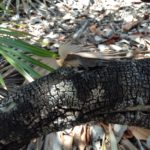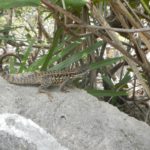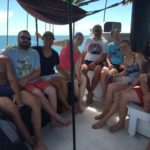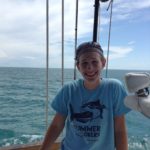Bahamas 2016: 2 weeks of sunshine + hard work = nearly 800 iguanas!
-
Herpetology Collection Manager Jessa Watters joined an expedition led by Earlham College’s Dr. John Iverson to the uninhabited Allen’s Cays and Bushhill Cay, Exuma Islands, Bahamas from May 16-27. The trip included a total of 16 field researchers and 6 crew of the ship, the Beacon Won. We visited a total four islands and studied demography and physiology of two endangered iguana species, Cyclura cychlura inornata and Cyclura rileyi. Research on this particular trip focused on continuing the the long-term natural history studies of both iguanas as well as collecting data on hormones, blood sugars, and reproductive output comparing C. c. inornata on islands where they are fed by tourists to islands on which they are not. The latter research, conducted by Dr. Susannah French and graduate student Alison Webb of Utah State University, involved taking blood samples, fecal samples, and tail volume of adults of both sexes of C. c. inornata, as well as, ultrasounds of female iguanas. Jessa was able to assist with all aspects of the iguana research, including the “fun” of catching the large and feisty iguanas while dodging sunburn, heat exhaustion, and poisonwood! She also took preliminary skin swabs of the invasive Cuban Tree Frog (Osteopilus septtentrionalis), to test for the presence of the chytrid fungus Batrachochytrium dendrobatidis (Bd) in the Exuma Islands.
Download a summary of the 2016 research here.
View a video montage of how to catch the Allen’s Cay iguanas here.
Research regarding hormone levels and reproductive output are now available online.
Photos (c) Jessa L. Watters, unless otherwise noted.
- Beacon Won at the marina in Nassau
- Beacon Won at sea
- Captain Bruce [(c) Jen Valiulis]
- Our fearless leader, John Iverson! [(c) Mollye Nardi]
- Leaving Nassau
- U cay
- U cay
- U cay
- U cay
- C. c. inornata [(c) Mollye Nardi]
- C. c. inornata [(c) Mollye Nardi]
- C. c. inornata [(c) Mollye Nardi]
- C. c. inornata
- C. c. inornata
- Leaf Cay
- Leaf Cay
- Leaf Cay
- Leaf Cay
- Iguanas waiting for tourists on Leaf Cay
- Taking blood sample
- Taking blood sample
- Taking blood sample [(c) Mollye Nardi]
- Ultrasounds [(c) Mollye Nardi]
- Ultrasounds
- Taking tail volume [(c) Mollye Nardi]
- Taking tail volume [(c) Mollye Nardi]
- Noosing!
- How to noose a lizard: Step 1 [(c) Mollye Nardi]
- How to noose a lizard: Step 2 [(c) Mollye Nardi]
- How to noose a lizard: Step 3 [(c) Mollye Nardi]
- Jessa & Mollye with their catch [(c) Mollye Nardi]
- Jessa on Leaf Cay
- Taking morphometrics
- Taking morphometrics
- Taking morphometrics
- So many iguanas!!
- Riding the dingy to shore [(c) Mollye Nardi]
- Swabbing tadpoles
- Swabbing tadpoles
- Swabbing tadpoles
- Swabbing tadpoles
- Field work station
- Flipping rocks to look for hatchlings on Leaf Cay
- Flat Rock Cay
- C. c. inornata hatchling
- C. c. inornata hatchling
- Bush Hill Cay
- Bush Hill Cay
- Bush Hill Cay
- From from the top of Bush Hill Cay
- Jessa at the top of Bush Hill Cay
- C. rileyi
- C. rileyi
- C. rileyi [(c) Jen Valiulis]
- C. rileyi
- C. rileyi
- C. rileyi
- C. rileyi hatchling
- C. rileyi hatchling
- C. rileyi hatchling
- Anole
- Gekko
- Curlytail
- Headed back to Nassau [(c) Jen Valiulus]
- Headed back to Nassau
To learn more about iguana research in the Bahamas, and other areas of the world, please read the recently released monograph, Iguanas: Biology, Systematics, and Conservation.


